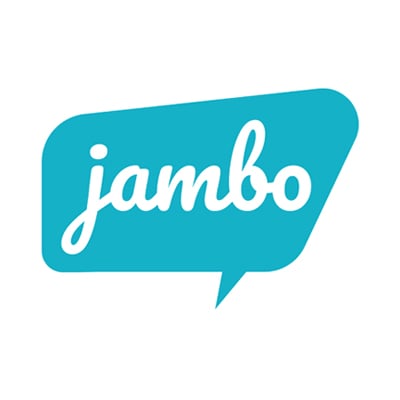
Emailing stakeholders is a standard communication tool for maintaining contact; however, it's not everyone's preferred method, so you should never assume a stakeholder is comfortable with email.
We've compiled a list of tips and information to consider when writing stakeholder emails for stakeholders who use email. Whether you'll be doing massive email campaigns or sending individual emails, these tips will apply.
What are the benefits of using email?
Before we jump into the tips, let's cover a few of the benefits of utilizing email:
Benefit 1. Two-way communication method
Utilizing two-way communication methods, like email, is crucial during stakeholder engagement.
When we refer to "two-way communication" methods, we mean communication that enables you to reach out to your stakeholders through a channel that allows them to respond to you.
Sending out an information package to stakeholders with no information on how to contact you is considered a one-way communication method because, while you can contact them, they cannot contact you. One-way communication methods can certainly be helpful in some situations. Still, it's essential to remember that your stakeholders possess valuable information and opinions on your projects, and it's beneficial to solicit their feedback.
Benefit 2. Immediate responses and replies
Email can be a helpful communication channel because it allows for immediate responses. With email, there's no waiting for the courier or attending a town hall; instead, stakeholders can provide their feedback and opinions immediately, and you can respond promptly as well.
Benefit 3. Think through responses
While you can send emails immediately, you can also take a few extra minutes to plan your responses.
Remember, careful and thoughtful language is vital when engaging with stakeholders. Having the ability to write out an email, check for grammar and share drafts with your team for feedback before sending the email is an excellent benefit.
Benefit 4. Add attachments and links for visual communication and fuller understanding
The ability to add attachments and links allows you to communicate in different ways.
Not everyone responds well or enjoys reading large bodies of text, so having the ability to attach various media (photos, videos, graphs, etc.) can help you communicate more clearly with your stakeholders.
Discover how Jambo's new campaigns module simplifies the creation of mass communication campaigns →
5 tips for writing effective stakeholder emails
The following are tips for writing effective and thoughtful emails to send to stakeholders:
1. Timing
Your content isn't the only thing that sends a message; when you choose to send an email, you also send an important message. If you're responding to a time-sensitive email, speed is often beneficial; however, remember to observe standard business hours for general emails.
Some people might feel obligated to respond to emails sent after work hours and can resent the fact that you're emailing them during their evening family time. Just because you might work in the evening doesn't mean everyone does (consider different time zones as well).
Tip: Some email programs, such as Outlook, allow you to schedule emails for a later date, which is helpful if you write an email at night but want to send it in the morning.
2. Don't skip the subject line
Be mindful that some people receive hundreds of emails each day, and email overload is a real problem. This means that emails without clear or compelling subject lines can get lost in the mix. To ensure your email isn't overlooked, keep your subject line clear and concise so that it's easy to understand what the email is about.
Example:
[Project name] Project Update – September 6, 2020
Example when feedback is required:
Reminder to provide input for [project name] – September 15, 2020
3. Don't rush
While it can be difficult not to rush if you're dealing with a time-sensitive email, taking a little extra time can make a significant impact on your stakeholders.
Take your time to check:
- Are the email addresses correct, and are you sending it to the right person?
- The spelling of the stakeholder's name
- Spelling and grammar: emails with spelling mistakes and grammar errors look messy and unprofessional, reflecting poorly on your project
4. Formatting makes a statement
Use of all caps
While all caps can be used to highlight a single word or phrase, repeated use of all caps is the equivalent of shouting and should be avoided.
Digestible content
Avoid large paragraphs of bulk text. No one enjoys opening an email with a massive text block that lacks defined paragraphs, bullets, or headers.
For more digestible content, make sentences short and easy to understand. Add headers and bullets where it makes sense—your readers will remember more of your content when you utilize formatting best practices.
Tip: Brevity is key! Decide on the most important message you want to convey, and then express it as concisely and clearly as possible.
5. Emails are not private
Don't say anything in an email that you wouldn't want other people to know or see—emails are not private. Just because you're sending an email to one person doesn't mean they will not share it with others.
Be wary of reply-all
On the topic of sharing information, if you're in a group email, don't automatically "reply-all." Take a moment to consider whether everyone in the group needs to receive the email you're sending.
Bonus tip 6. Utilize templates
Especially if you'll be emailing a lot of stakeholders or are new to these types of emails, utilizing an email template can be an effective way to streamline your emails quickly and efficiently!
Tip: You can also add these to a template folder in your email application (such as Outlook) for quick access.
Next steps
If you're still unsure where to start with your stakeholder emails, download our free email templates for three unique stakeholder scenarios to help you get started.
In our downloadable email templates, we cover:
- The first outreach
- Picking the conversation back up
- Providing an update when there are no updates







